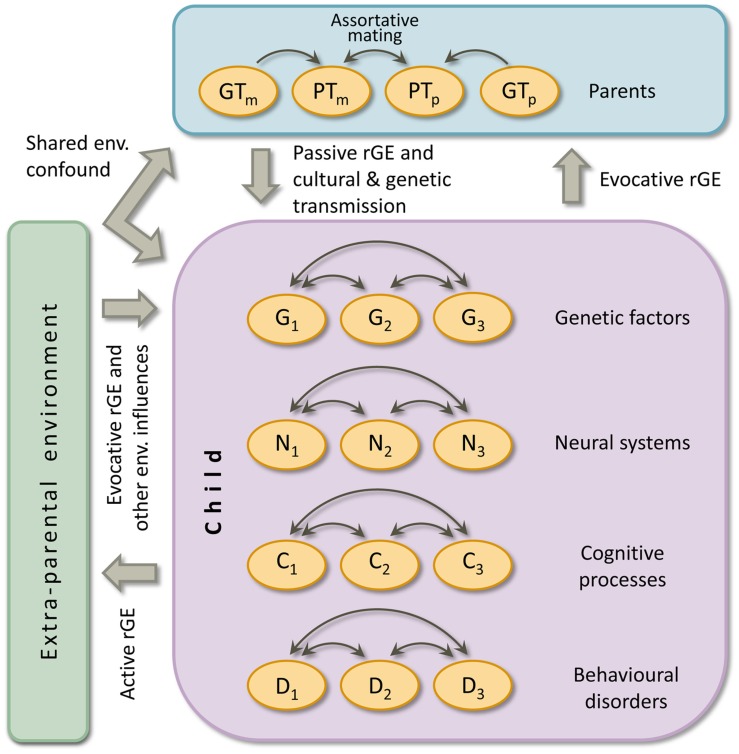FIGURE 3.
The intergenerational multiple deficit model. Double headed arrows indicate interactions. Causal connections between levels of analyses are omitted. GTm = maternal genotype, PTm = maternal phenotype, GTp = paternal genotype, PTp = paternal phenotype, G = genetic risk or protective factor, N = neural system, C = cognitive process, D = complex behavioural disorder, env. = environmental, rGE = gene-environment correlation. Terminology: a phenotype is any measurable characteristic of an individual (e.g., reading ability or parenting style); a genotype is an individual’s genetic makeup. There is shared environmental confound if an environmental factor influences both the parental and child phenotype. Genetic transmission refers to the genotypic factors passed down from parent to offspring that influence the phenotypes in both generations. Cultural transmission is the genuine environmental influence of parental characteristics on child outcome, so controlled for environmental and genetic confounds. Assortative mating is non-random mating. Gene-environment correlation (rGE) refers to the situation in which exposure to environments is not independent but correlated to the child’s genotype (see the text for explanation about the three forms of rGE). The figure depicts the situation for one individual child and his/her (biological) parents. At the group level (i.e., multiple children), a second form of gene-environment interplay emerges: gene-environment interaction. That is, heredity depends on the environment, or sensitivity to the environment depend on genotype.

